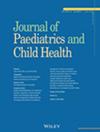A Single Centre's Experience of Non-Iatrogenic Neonatal Bilateral Vocal Cord Paralysis
Abstract
Objectives
To review our institutional experience with bilateral vocal cord paralysis (BVCP) of non-iatrogenic origin in neonates, with a particular focus on diagnostic methods and the changing role of tracheostomy and non-invasive ventilation.
Study Design
Retrospective, single-centre study at a tertiary paediatric hospital.
Methods
Our BVCP population was reviewed (2003–2020). We extracted demographics, diagnostic methods (endoscopy and imaging), methods of respiratory/ventilatory support, and functional outcomes.
Results
60 neonates with BVCP were included. All underwent endoscopic assessment, revealing synchronous airway lesions in 20% of the cases. Brain MRIs were obtained in 55/60 patients and showed anomalies in 30% of the cases, particularly intracranial haemorrhages, with only one structural anomaly of the brain. Approximately two-thirds of the children required respiratory/ventilatory support, and 16/60 children received tracheostomies. We observed a progressive reduction in the use of tracheostomies over the study period, with in parallel a longer length of respiratory or ventilator support. 4/16 children remained tracheostomy dependent at last follow-up, all of them with associated comorbidities. The only significant feature associated with the need for tracheostomy was previous intubation. Overall, almost 40% of the children needed nutritional support at discharge. No deaths related to BVCP occurred.
Conclusion
We observed a significant decrease in the use of tracheostomies within the study period. The need for intubation and existence of comorbidities seems to be the most relevant outcome factors. Incomplete recovery and swallowing impairment are common, thus warranting long-term follow-up.

 求助内容:
求助内容: 应助结果提醒方式:
应助结果提醒方式:


